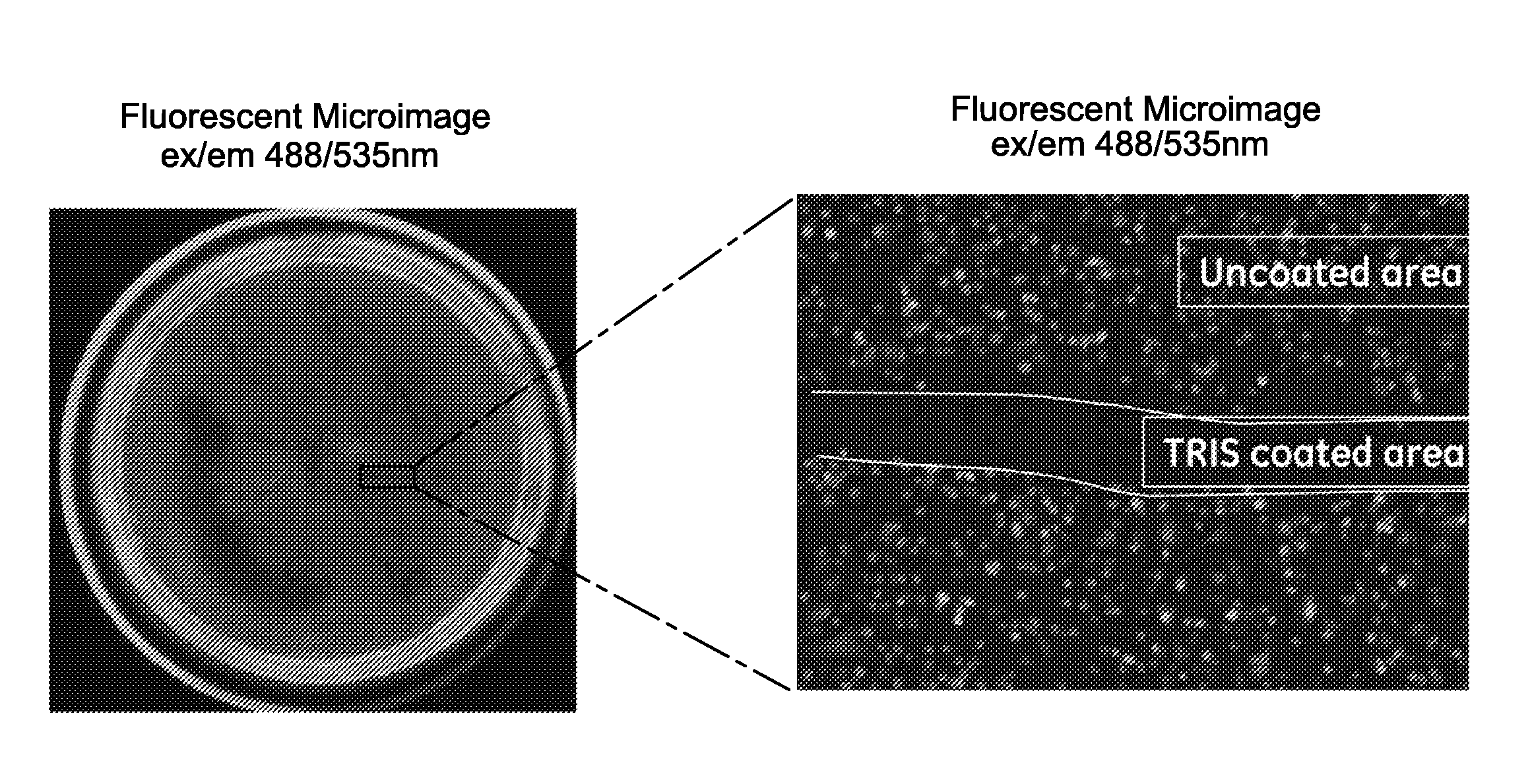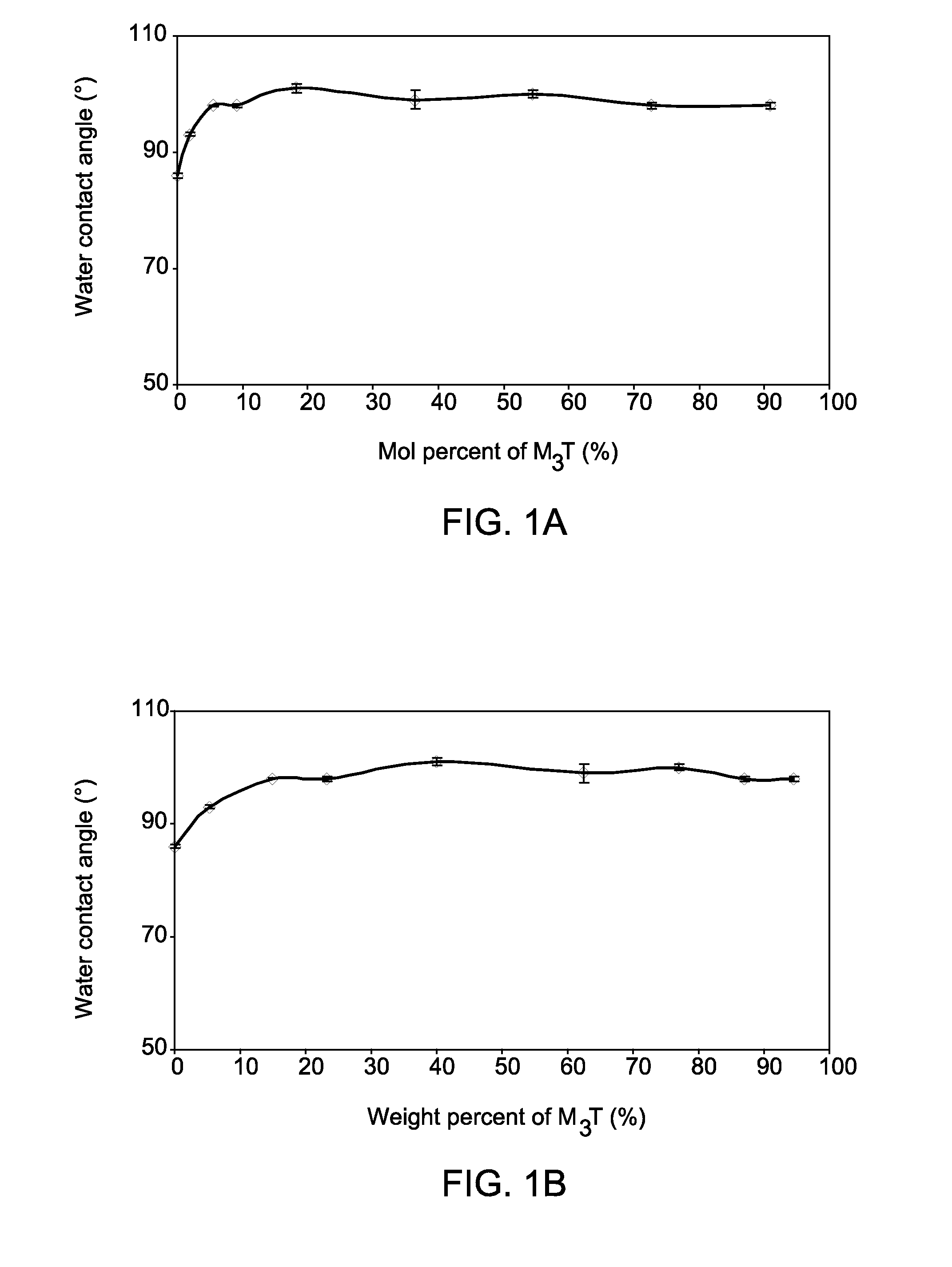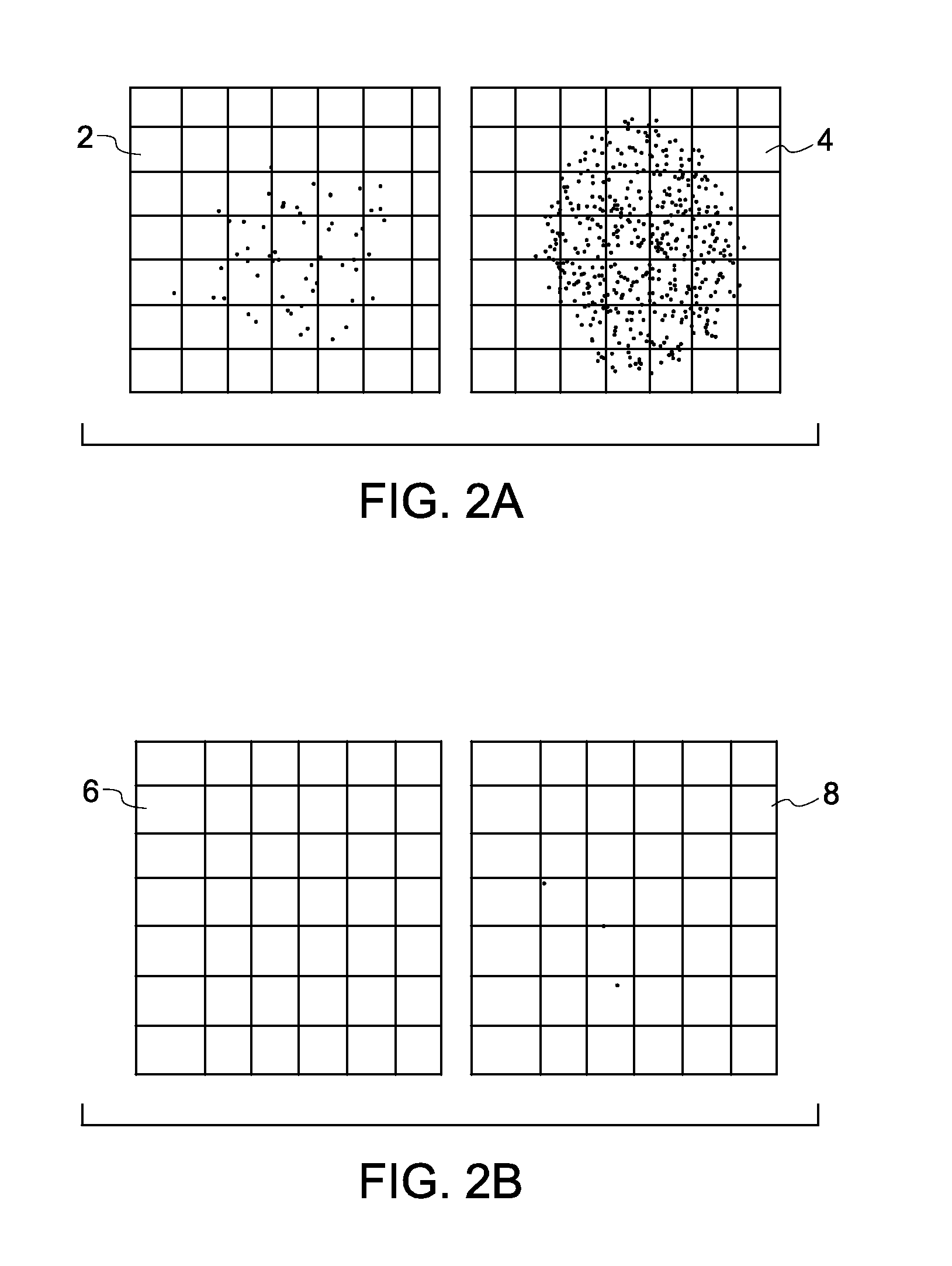Non bio-adhesive polymer coating composition, articles and devices thereof
a technology of non-bioadhesive polymer and coating composition, applied in the field of polymer-based coatings, can solve the problems of dna spot cross contamination over other neighboring spots, spot cells in high-density cell growth on slides or plates becoming a challenge for biologists, and the successful mechanism for preventing dna spot cross contamination between adjacent colonies or dna spots has not yet been successfully implemented. , to achieve the effect of preventing cellular contamination
- Summary
- Abstract
- Description
- Claims
- Application Information
AI Technical Summary
Benefits of technology
Problems solved by technology
Method used
Image
Examples
example 1
Synthesis of tris-trimethylsilylpropyl containing acrylate copolymer
[0041]Materials: White Spirit was purchased from Aldrich and all other solvents were purchased from Sinopharm Chemical Reagent Co., Ltd (China). Tris-trimethylsilylpropyl methacrylate (M3T) and 3-aminopropyltrimethoxysilane (A1100) were obtained from GETOS (Japan) and GE silicones (China) respectively. Trimethoxysilylpropyl methacrylate (TMOSPMA), 2-hydroxyethyl methacrylate (HEMA), glycidyl methacrylate (GMA), dibutyltin dilaurate (DBTDL) and methylene diphenyl 4,4′-diisocyanate (MDI) were purchased from Aldrich. Polyisocyanate Desmodur N3300 was purchased from Bayer. Propyl methacrylate (PMA) was purchased from Alfa Aesar. The inhibitor remover, used to remove any inhibitor present in methacrylate monomers, was purchased from Aldrich. The initiator, 2,2′-azobis(2-methylpropionitrile) (AIBN), was purchased from Sinopharm Chemical Reagent Co., Ltd (China), and recrystallized from ethanol prior to its use.
[0042]Tris-...
example 2
Formation of coatings on carbon steel panels
[0045]Several samples of carbon steel panels were washed with isopropanol and dried at room temperature. An anti-corrosive undercoat Safeguard Universal ES (from Jotun, Sandefjord, Norway) was applied to a carbon steel panel. Five parts of a base (pre-polymer) was mixed with one part of a curing agent using a high speed mixer and the mixture was then applied to the same carbon steel panel using a 300 μm draw-down bar, followed by overnight curing at room temperature. The panel thus prepared was stored in a sealed container. The synthesized copolymers were further concentrated to the required concentration (about 30% by weight) by rotary-evaporation, mixed with a catalyst and / or a curing agent (about 1 wt % of the pure copolymer), and applied as another undercoat on the carbon steel panel using a 300 μm draw-down bar and finally cured either keeping the panel at room temperature for 5 days or keeping at 80° C. for 4hrs.
example 3
Synthesis and Characterization of M3T-co-TMOSPMA copolymerfilm / coating
[0046]In one example, the copolymer M3T-co-TMOSPMA was mixed with DBTDL and A1100. The mixture was applied to the basecoat of a carbon steel panel using a 300 μm draw-down bar to form a film (or coating). The film was characterized using water contact angle measurements and pencil hardness tests, and the results are shown in Table 1. For this class of copolymers, the coatings formed on glass slides were transparent. The molar ratio of TMOSPMA to M3T and the curing temperature appear to have limited effect on the coating surface properties and mechanical properties.
TABLE 1Characterization of different (M3T-TMOSPMA) copolymerWater Contact AnglePolymerCuring process(°)Pencil hardnessCoplymer(M3T-TMOSPMA)Room temperature for 5 days99 + / − 0.4 (removesofter than 6Bwith molar ratio of 10 / 1error, since it is higherthan these numbers)80° C. for 4 hrs98 + / − 0.3softer than 6BCoplymer(M3T-TMOSPMA)Room temperature for 5 days99...
PUM
| Property | Measurement | Unit |
|---|---|---|
| Volume | aaaaa | aaaaa |
| Volume | aaaaa | aaaaa |
| Volume | aaaaa | aaaaa |
Abstract
Description
Claims
Application Information
 Login to View More
Login to View More - R&D
- Intellectual Property
- Life Sciences
- Materials
- Tech Scout
- Unparalleled Data Quality
- Higher Quality Content
- 60% Fewer Hallucinations
Browse by: Latest US Patents, China's latest patents, Technical Efficacy Thesaurus, Application Domain, Technology Topic, Popular Technical Reports.
© 2025 PatSnap. All rights reserved.Legal|Privacy policy|Modern Slavery Act Transparency Statement|Sitemap|About US| Contact US: help@patsnap.com



